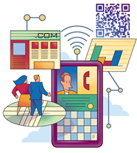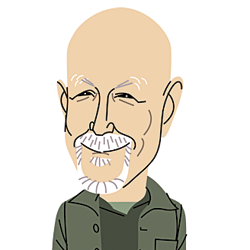social media
 We're using Twitter to
promote various marketing initiatives, and our main goal is to get people to click through to our exhibit- and event-related microsite. How can we optimize our click-through rate? We're using Twitter to
promote various marketing initiatives, and our main goal is to get people to click through to our exhibit- and event-related microsite. How can we optimize our click-through rate?

Twitter isn't just a trendy way to follow the Mother Monster; it's also an effective broadcast medium for marketers. It allows you to keep conference attendees, user-group registrants, customers, and prospects up to speed on everything from your company's latest product launch to the next iPad drawing that's about to go down in your booth.
But you can't just haphazardly drop a link into your tweet and expect your followers to click through without a second thought. There are certain things you should - and should not - do to generate the highest possible click-through rate (CTR).
Dan Zarrella, a social-media scientist for HubSpot Inc. (which provides a marketing-software platform for blogging, marketing analytics, lead management, e-mail marketing, social-media monitoring, etc.), recently analyzed more than 200,000 tweets to determine why some missives are more effective than others in terms of CTRs. His analysis provides broad parameters for what works and what doesn't, concerning everything from character counts to word choice.
Granted, before your company can benefit from Twitter's mass-broadcast capabilities, you first have to develop a sizeable list of followers. But assuming
you've done your homework and established a respectable following, Zarrella's six tactics can help you optimize your Twitter CTR. While your marketing tweets will probably never get the same play as those from Perez Hilton, Lady Gaga, or Kim Kardashian, these easy-to-implement tactics are sure to boost your CTR faster than you can say "Holy hashtag."
1. Use between 120 and 130
characters. While marketers typically aim for brevity in everything from
exhibit graphics to product brochures, research shows that tweets between 120 and 130 characters have higher CTRs than all other character ranges. It seems that before followers will click on your link, they want to know where they're headed and why.
2. Place the link around the one-quarter mark in the text. In terms of link placement within the text, missives with the highest CTRs feature a link roughly 25 percent of the way into the text. Apparently, followers want to know there's a link in your tweet relatively quickly, as opposed to
discovering it tucked away at the end. So place your link right around the 30- to 35-character mark.
3. Tweet sparingly. When it comes to tweets with imbedded links, aim for fewer than one tweet per hour. If you send two link-related tweets per hour, your CTR decreases by half; send three link-related tweets within an hour, and followers will tune you out and crash your CTR.
4. Use more verbs and adverbs
and fewer nouns and adjectives. Common sense suggests that action words - either what you want followers to do or what your product/service can do for followers - attract more attention than nouns and adjectives, which are often passive descriptors. Thus, tweets with the highest CTRs contain more adverbs and verbs than they do nouns and adjectives.
5. Tweet on the weekend. Monday through Wednesday offer the lowest
CTRs of all days. It's almost as if people are so consumed with their work lives that they don't have time for tweets. As you move toward the weekend, CTRs pick up on Thursday and Friday, but the highest CTRs occur on Saturday and Sunday. One might reason that people are more inclined to click through on a link when they're at home as opposed to at work.
6. Aim for the end of the day. Along these same lines, CTR rates increase as the day goes on. The early morning
hours of 3 a.m. to 8 a.m. offer the lowest
rates, and there's a slight spike in CTRs between 8 and 9 a.m. (possibly right before people settle into their workdays). Between 9 a.m. and 2 p.m., CTRs drop off considerably, but they pick up again from 2 p.m. to 12 a.m. Logic seems to indicate that people hunker down into their work-related responsibilities from 9 a.m. to 2 p.m. Then, when the afternoon starts to drag on and they need a mental break from the 9-to-5 grind, they're more inclined to click through to a link.
As you can see, these six simple tactics aren't only easy to comprehend; they're also easy to implement. Keep them in mind when you write and send your next link-included tweet, and your CTR will shoot up faster and higher than summer gas prices.
- EXHIBITOR Staff
Exhibit Staffing
 As our company's new exhibit manager, I'm trying to figure out how many staffers to send to each show. Are there any rules of thumb, or do I just have to trust the staffing estimates from the sales department? As our company's new exhibit manager, I'm trying to figure out how many staffers to send to each show. Are there any rules of thumb, or do I just have to trust the staffing estimates from the sales department?
 Rather than asking the salespeople to predict how many staffers you'll need at each show, ask them how much time, on average, staffers spend with each person that walks in the booth. After getting that information, determine how many leads your company collected at each trade show the previous year, and how many hours each show floor is open. Then apply the following math to your unique exhibiting situation. Rather than asking the salespeople to predict how many staffers you'll need at each show, ask them how much time, on average, staffers spend with each person that walks in the booth. After getting that information, determine how many leads your company collected at each trade show the previous year, and how many hours each show floor is open. Then apply the following math to your unique exhibiting situation.
Let's say your staffers need
an average of eight minutes to
communicate with each booth visitor at the Big Bold Widgets show. This probably involves a conversation starter of some sort, an elevator pitch, and a few qualifying questions. In this scenario, if a salesperson averages eight minutes with each booth visitor, he or she can only speak with roughly seven visitors per hour. If Big Bold Widgets is open for 18 hours over three days, each staffer can speak with no more than 126 booth visitors during the entire show.
Next, factor in the number of
leads you've received in the past at Big Bold Widgets. If you've never attended this particular show before, use show-related data to guesstimate how many attendees actually fall within your target market, and
generate a rough estimate for how many people from that target audience will likely visit your booth during the show. This figure will vary based on a handful of factors, including the number of hours the show floor is open, your in-booth traffic builders, your booth location, etc. But careful consideration of the variables will help you generate a ballpark figure.
Finally, divide the number of expected booth visitors by the number of visitors each staffer can handle during the show. The resulting figure is the minimum number of staffers you need. For example, if you expect 525 people to visit your booth, and you know each staffer can handle a maximum of 126 visitors during the show, you need a minimum of four staffers.
Remember that this simple math doesn't account for myriad variables - such as extra staffers required to gather crowds for presentations, lengthy product demonstrations, impromptu meetings, lunch breaks, show-floor traffic fluctuations, etc.
But this formula should give you a jumping-off point for the minimum number of booth staffers you need
for each show on your calendar.
- Scott Tokar, founder, Corporate-FX Inc., Foothill Ranch, CA
|






 We're using Twitter to
promote various marketing initiatives, and our main goal is to get people to click through to our exhibit- and event-related microsite. How can we optimize our click-through rate?
We're using Twitter to
promote various marketing initiatives, and our main goal is to get people to click through to our exhibit- and event-related microsite. How can we optimize our click-through rate? 



